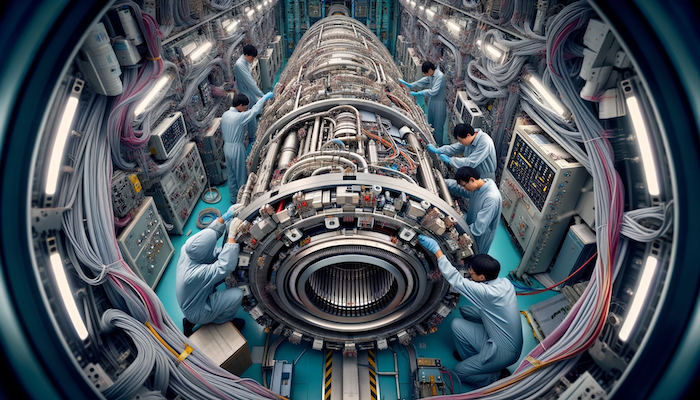
Nuclear Fusion Research
Nuclear fusion research, a pivotal international collaboration plan in the scientific and technological community,positioned to tackle humanity's impending energy challenges. Fusion energy provides numerous advantages over non-renewable and conventional clean energy sources, including limitless resources, neglectable environmental contamination, the absence of highly radioactive nuclear waste, and even more. It is one of the dominant forms of future energy for human beings, and it is also one of the significant approaches that has been identified as the potential way to tackle both the energy and environmental issues and promote human sustainable development.

‘Artificial Sun’
All living things rely on the sun. Nuclear fusion is the fundamental principle elucidate the produce of solar heating and light. Scientists have long been dedicating to exploring controlled nuclear fusion in order to develop a source of infinite clean energy. Thus, an ‘Artificial Sun’ is defined as a controlled nuclear fusion reactor on Earth intended to produce clean energy sources. Once fusion energy is achieved, human civilization will no longer be constrained by energy limitations. The energy dream that shines globally in the middle of this century will be the realization of the ‘Artificial Sun’.

ITER
‘The International Thermonuclear Experimental Reactor (ITER)’ is a cryogenic superconducting Tokamak nuclear fusion experimental reactor. The European Union, the United States, Russia, China, South Korea, India, and Japan are all participating in this program. Nowadays, it is one of the world’s largest and most far-reaching international scientific research collaboration plans, and it is also colloquially referred as the ‘Artificial Sun’.